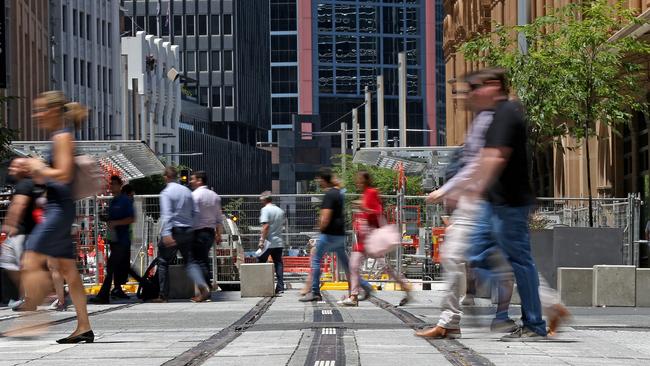Call for CBD traffic tax
A Gratton Institute report claims people who work in CBDs are wealthier and can afford a congestion tax.

People who work in the CBD are significantly richer than the average and can afford a congestion tax, a new report says.
The Grattan Institute report released on Monday says “even a modest charge could mean up to 40 per cent fewer cars entering the central area during the morning peak”.
The report says Australia’s big cities are ripe for congestion charging, with huge public transport projects due to shortly come on stream.
These projects include the Sydney Metro and Southwest in 2024, Melbourne Metro in 2025 and Western Sydney Airport Rail in 2026.
“In Australian cities, when governments see congestion, the solution they reach for is more roads and more public transport.
“Decades of more roads and more public transport have given us the levels of congestion we see today. It’s time for Australian cities to embrace congestion charging,” the report says.
The report, Why It’s Time for Congestion Charging, rejects critics of congestion charging who say a flat charge to enter the CBD will disproportionately affect poorer people.
“People who drive to the city each day for work are more than twice as likely to earn a six-figure salary as other workers,” it says.
“The median income for a Sydney driver to the CBD is nearly $2500 a week — about $1000 a week more than the median income of full-time workers across all of Sydney.”
The report rejects the suggestion that less-well-off workers have to drive greater distances from outer suburbs to get to work and are more affected by congestion than better-off workers. “In fact it is typically higher-income workers who drive further to work. And those who drive long distances tend to have higher incomes — higher-income drivers are willing to travel further to get to their higher-paying job,” the report says.
The exception were those at the very top end of the income scale ($3000 a week or more) who, the paper suggests, could afford to live where they wanted, which allows them to choose homes closer to work.
The report proposes a phased approach. First a cordon around the CBD of capital cities then later charges on more arterial roads and freeways.
Report author Marion Terrill, the Grattan Institute’s transport and cities program director, said congestion charging was not “anti-car”.
“It’s designed to get more out of the infrastructure we have,” Ms Terrill told The Australian.
“It’s designed to get the more flexible drivers to change their behaviour either in mode of transport or time of trip, which will make a better, more reliable and less congested journey for those who have less flexibility and still need to drive.”
Ms Terrill said congestion charges were a demand-dampening measure that would encourage a more rational use of existing resources.
“Even though politicians typically rule out congestion pricing as soon as it is mentioned, they are happy to have new toll roads which will inevitably become as choked as the current ones are,” she said.
“If you think new roads will bust congestion, you will be disappointed. Roads won’t do that. They will fill up with traffic.”
The report cites London and Singapore as successful examples of the introduction of congestion charging into the central business district, although it concedes London’s charging scheme has been compromised.
“The (London) scheme initially reduced delays in the cordon by 30 per cent and reduced circulating traffic by 15 per cent, though exemptions granted to private hire vehicles (such as ride-sharing vehicles) have undermined this in recent years.”




To join the conversation, please log in. Don't have an account? Register
Join the conversation, you are commenting as Logout